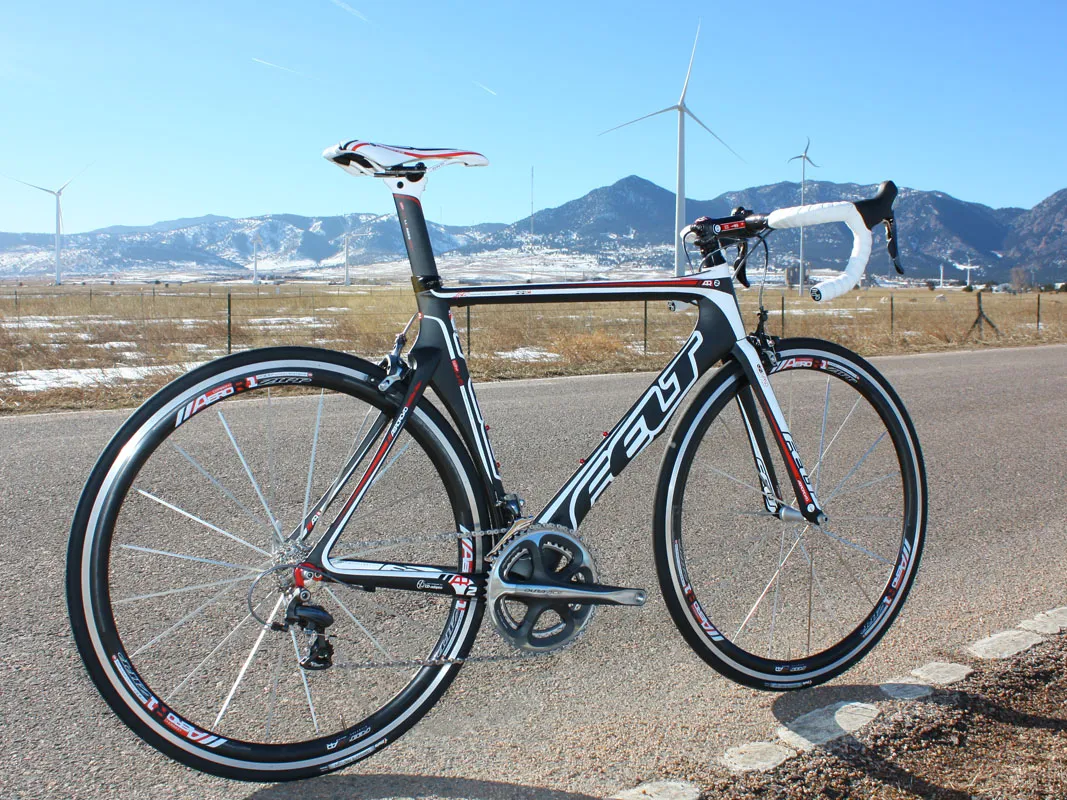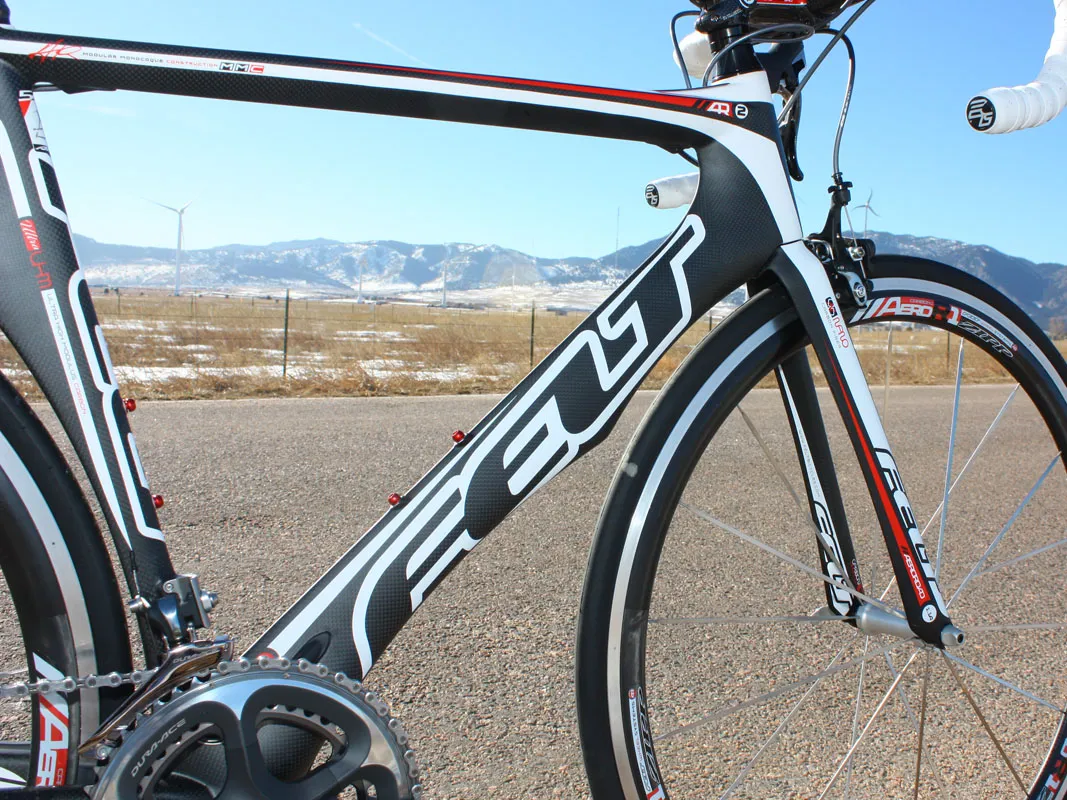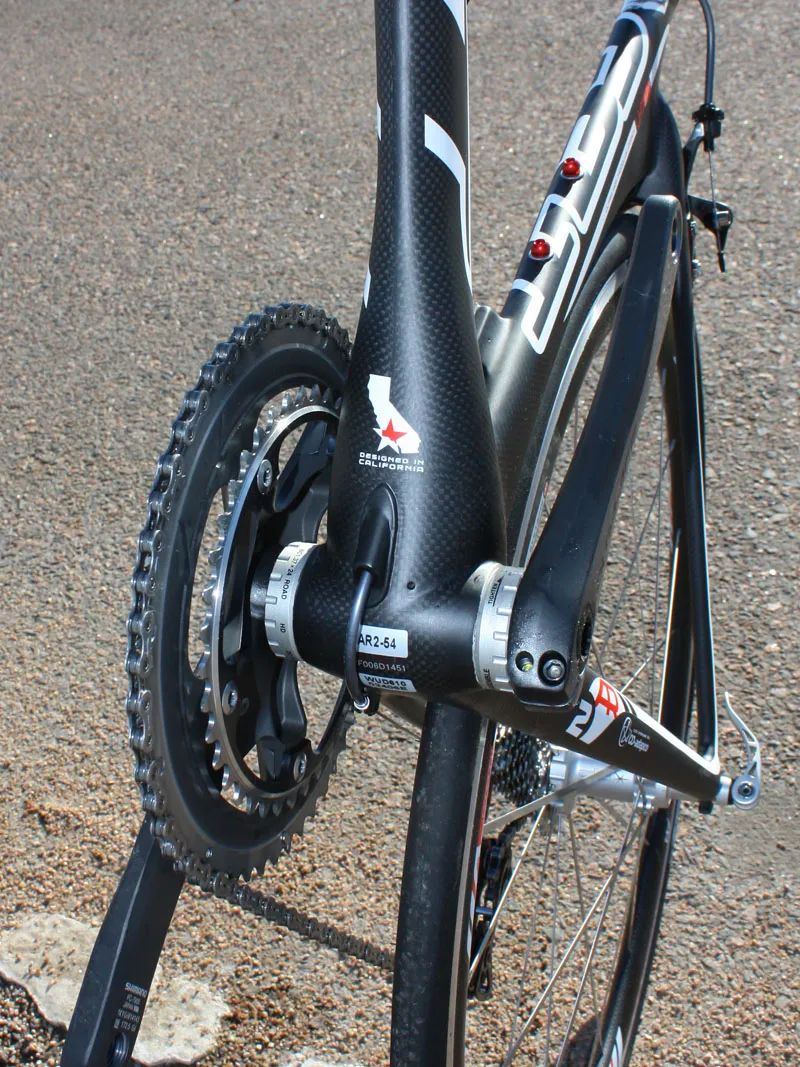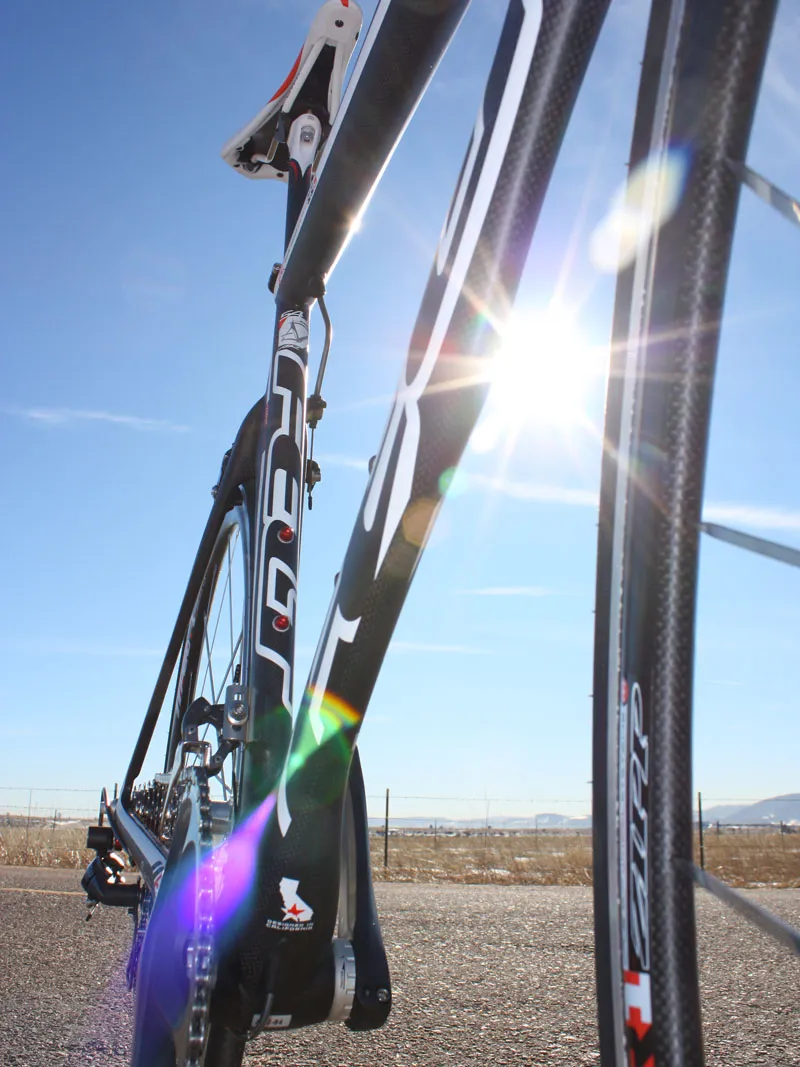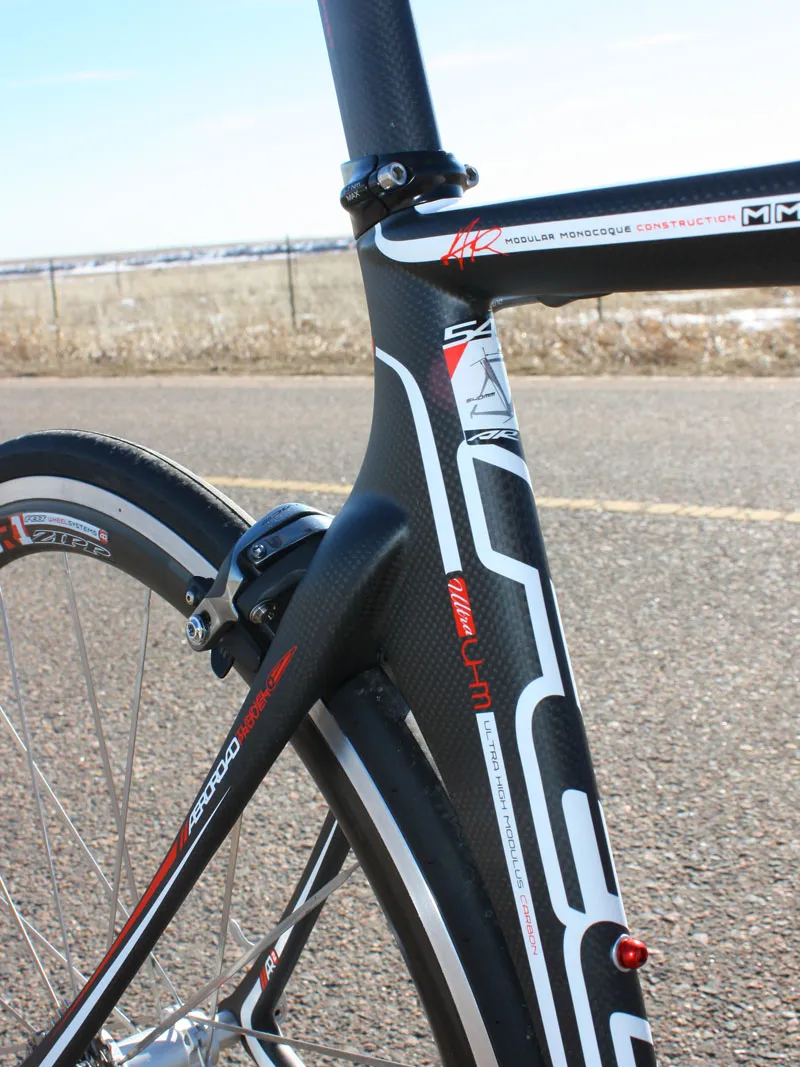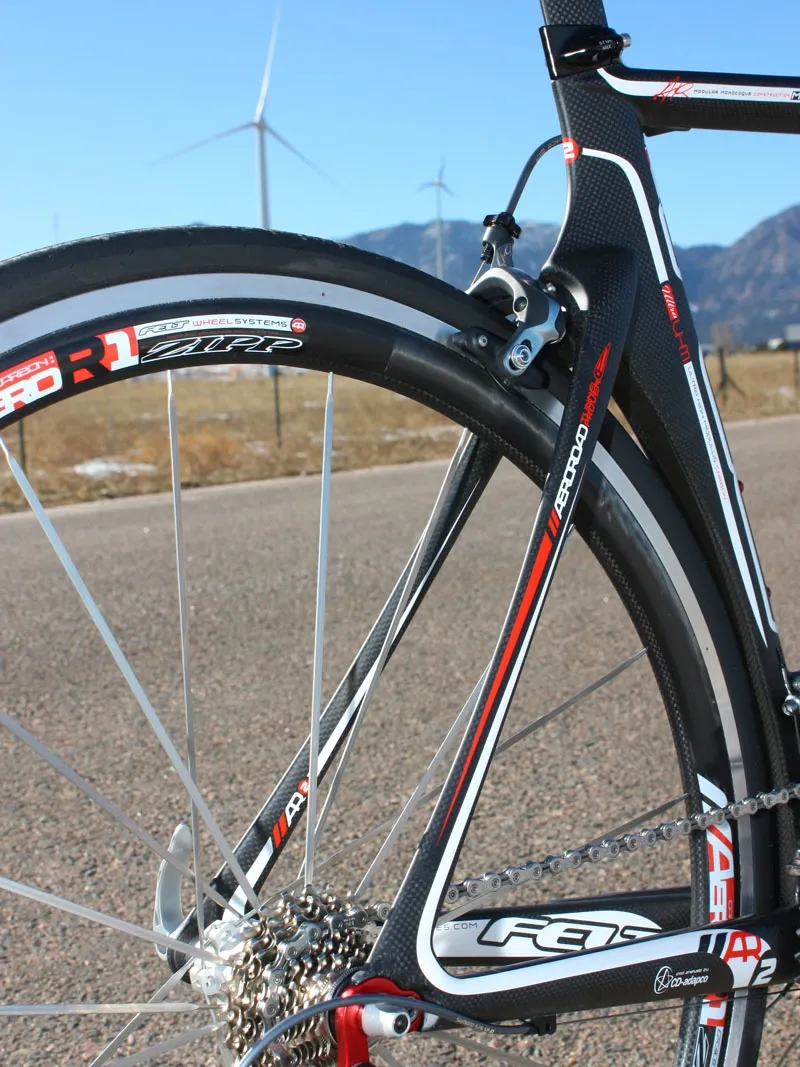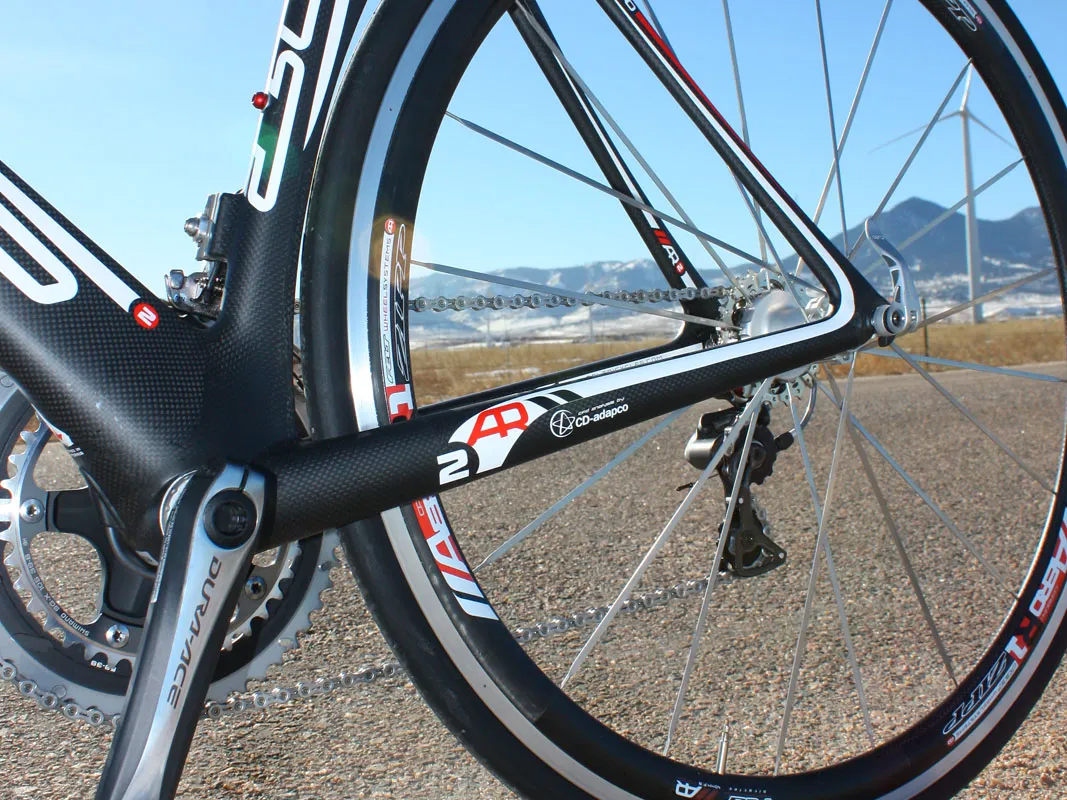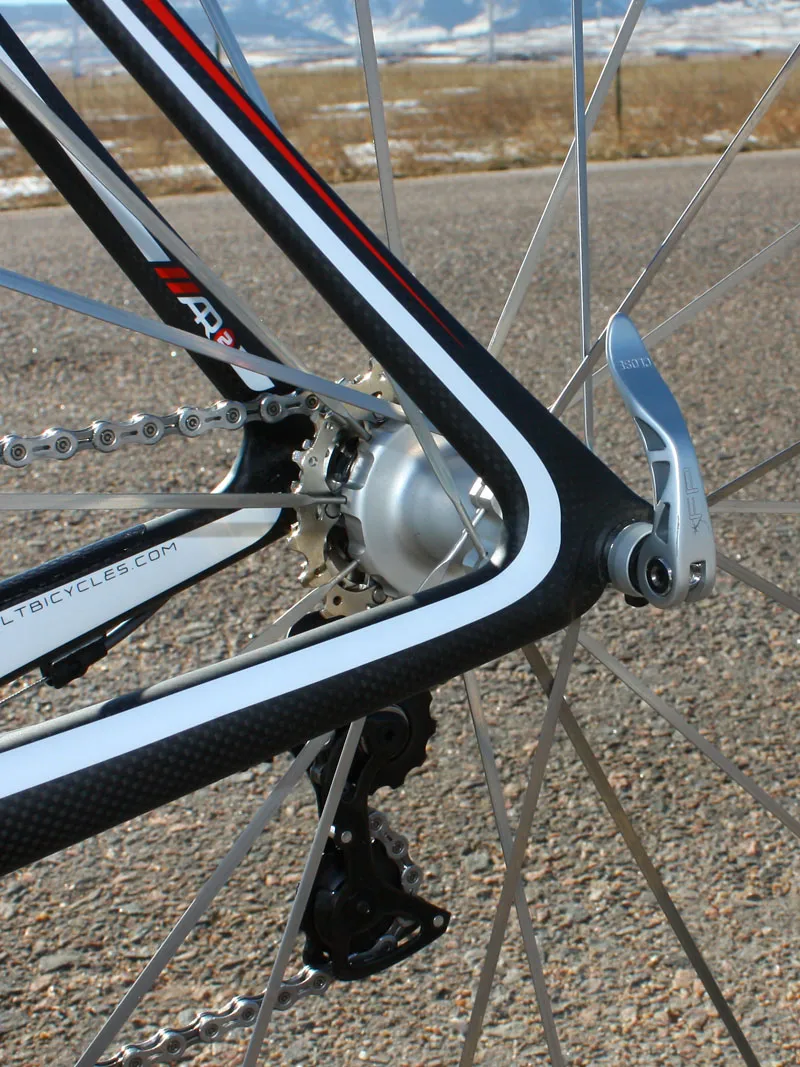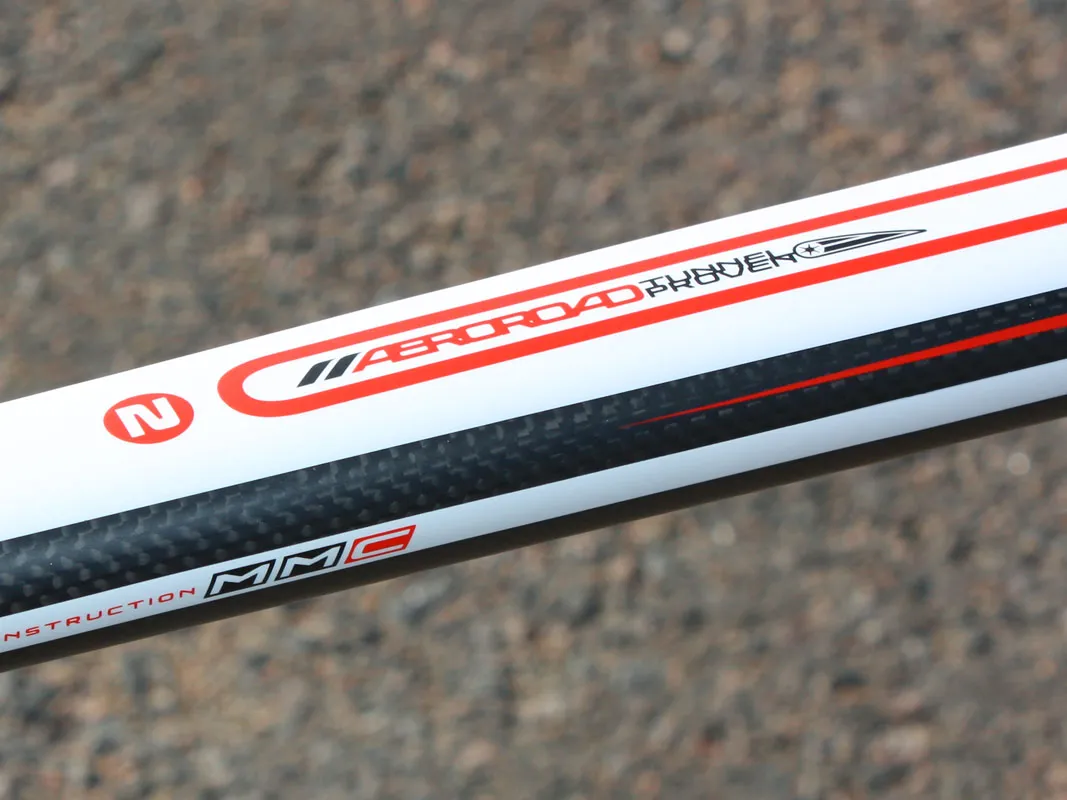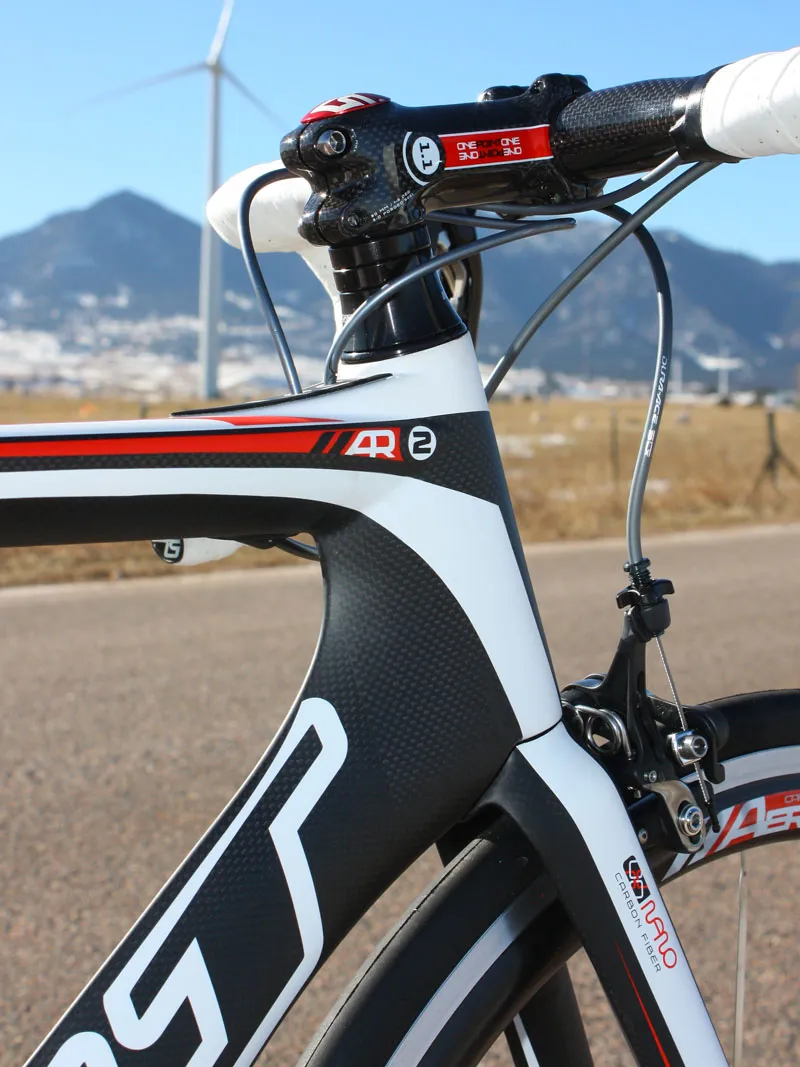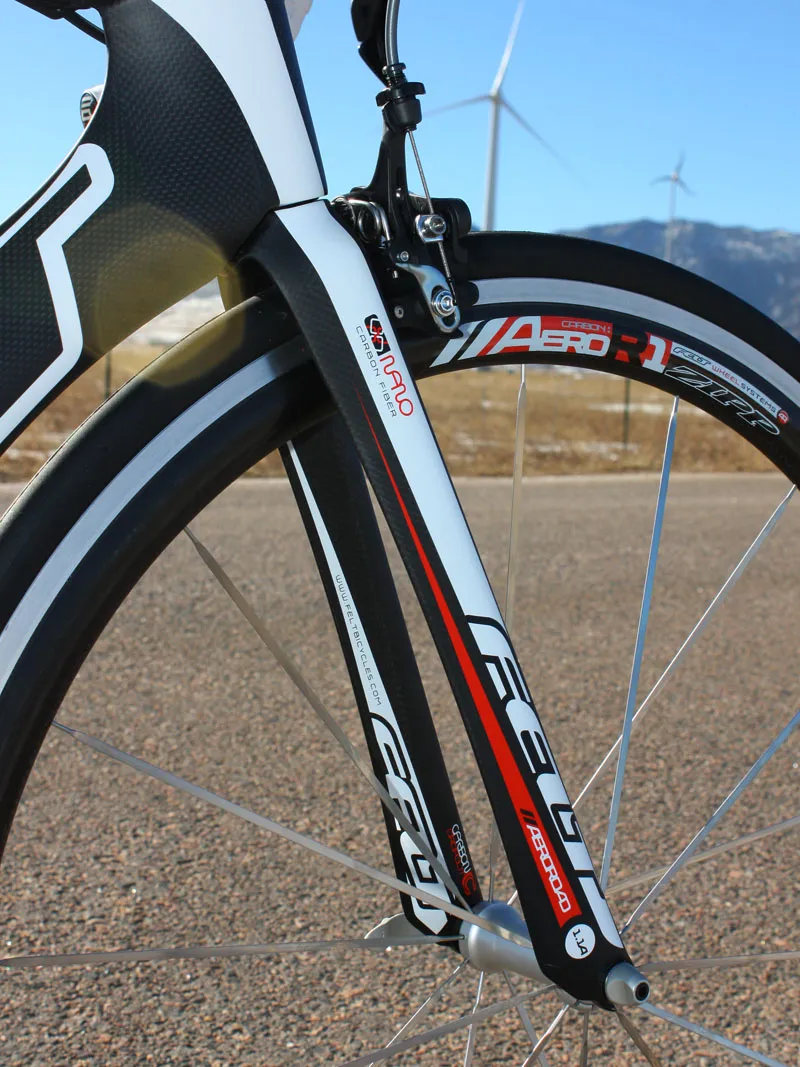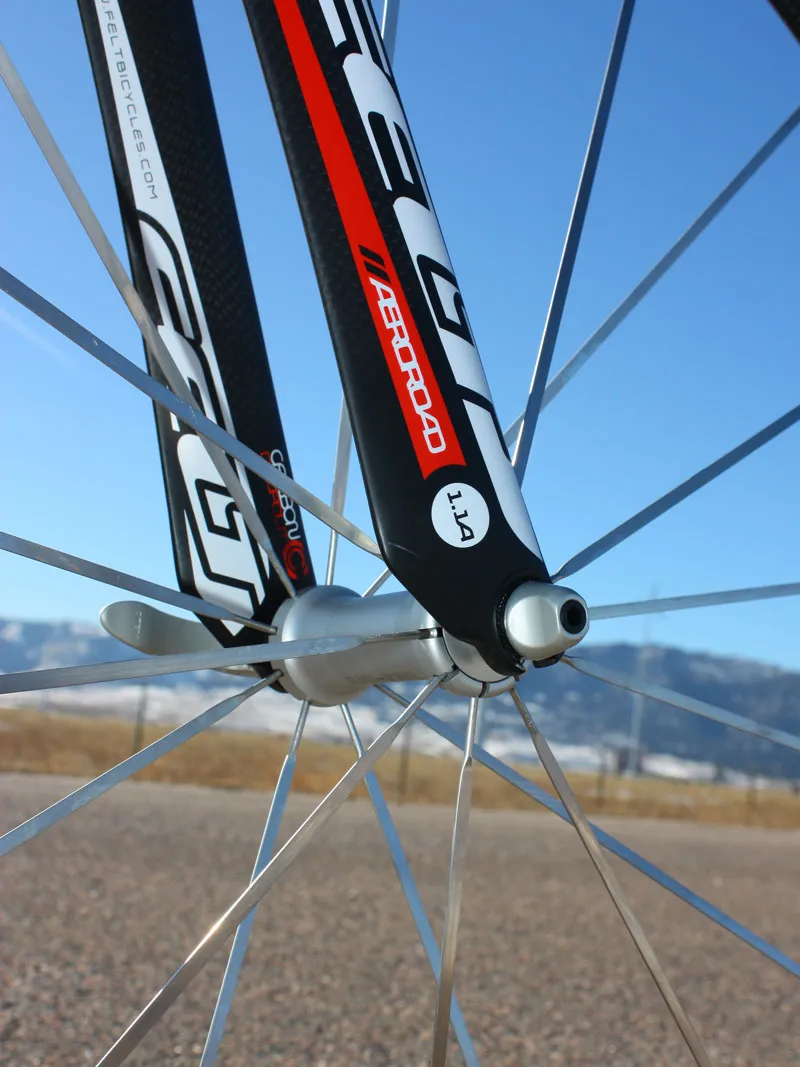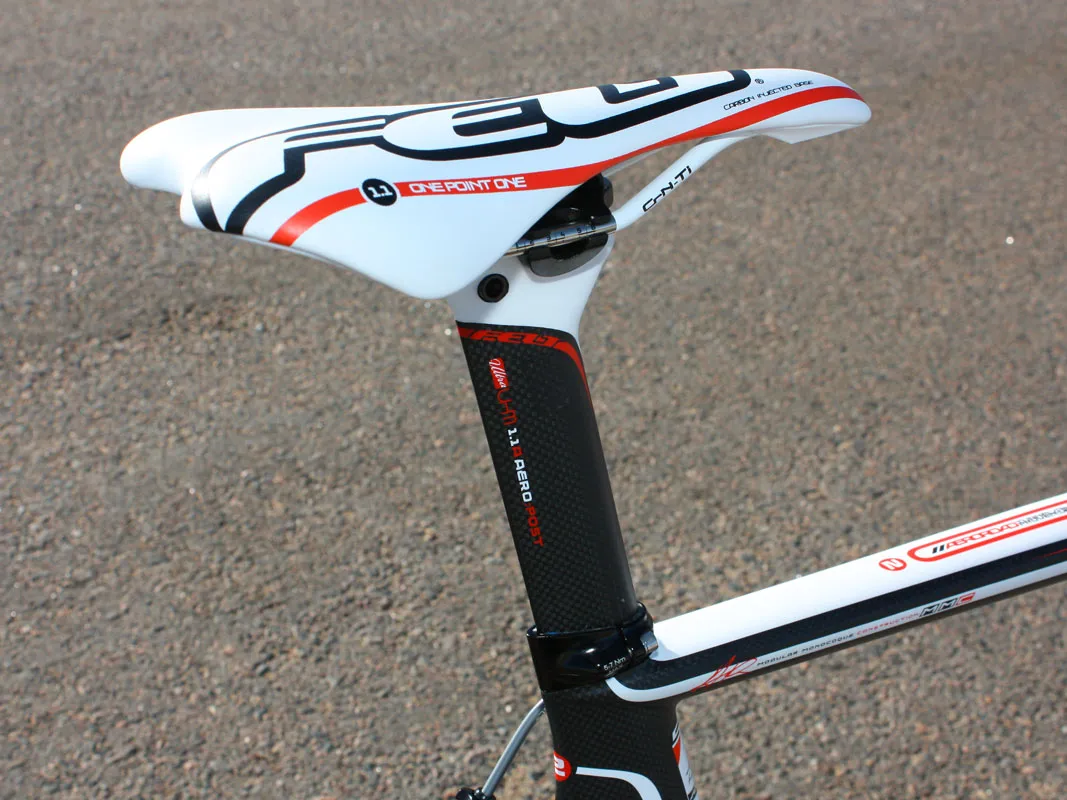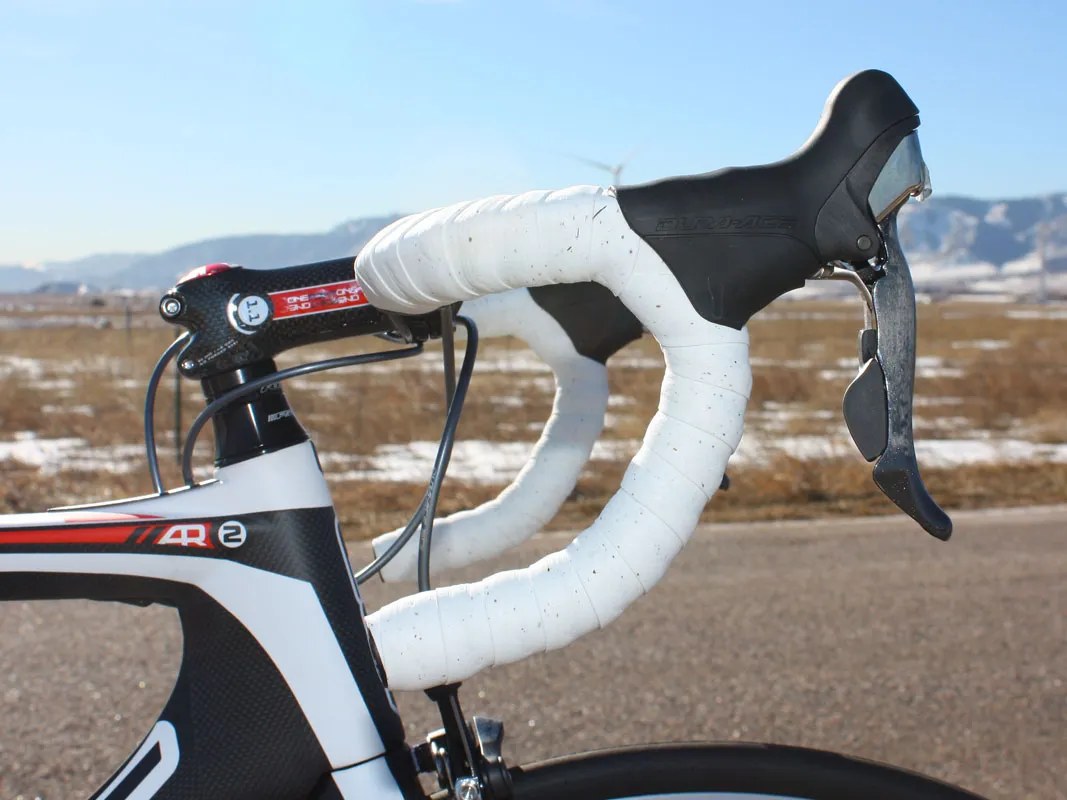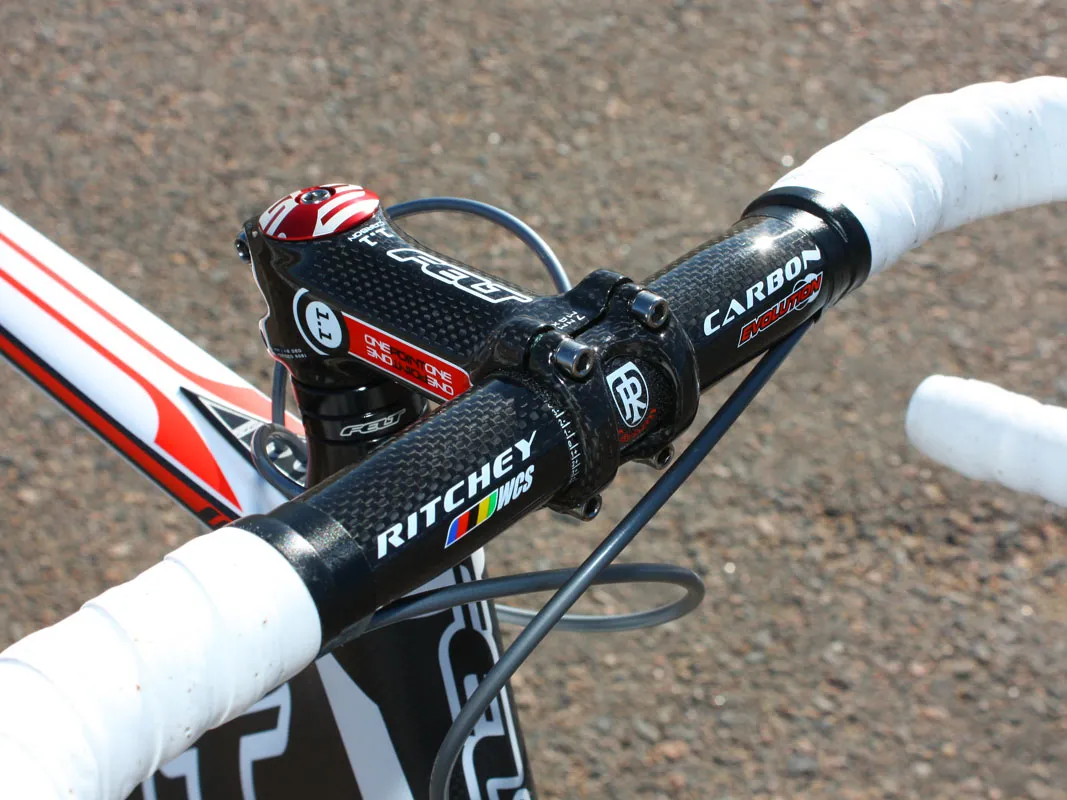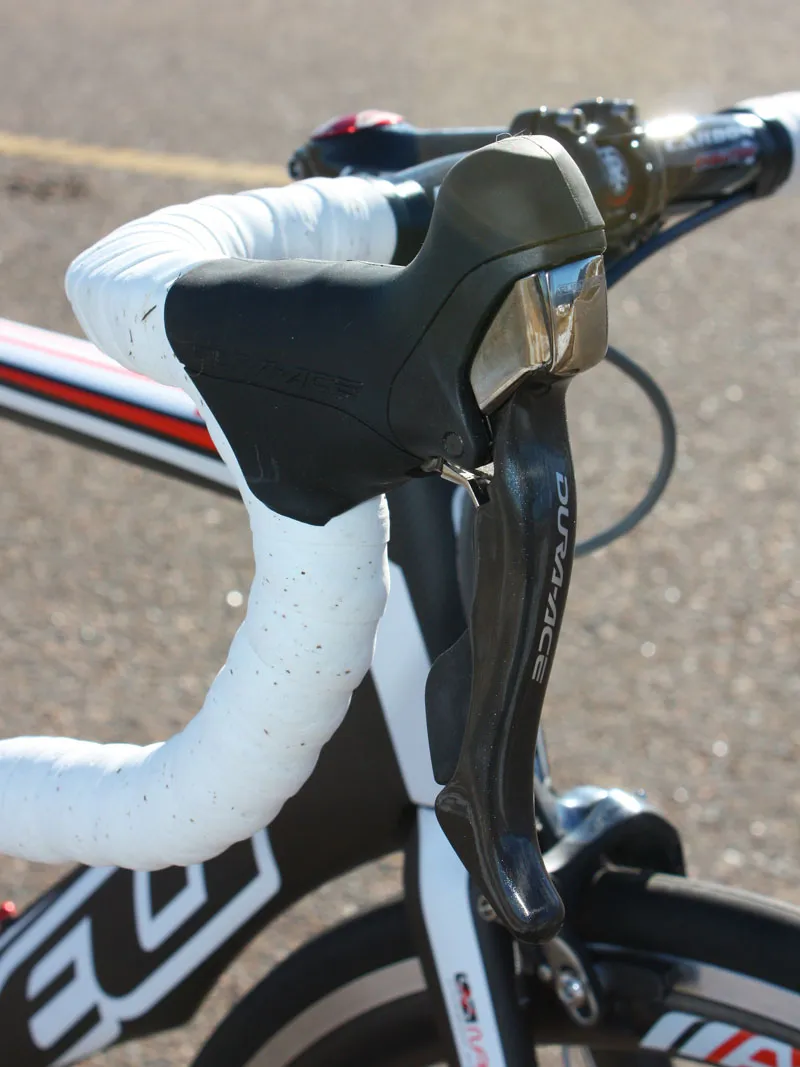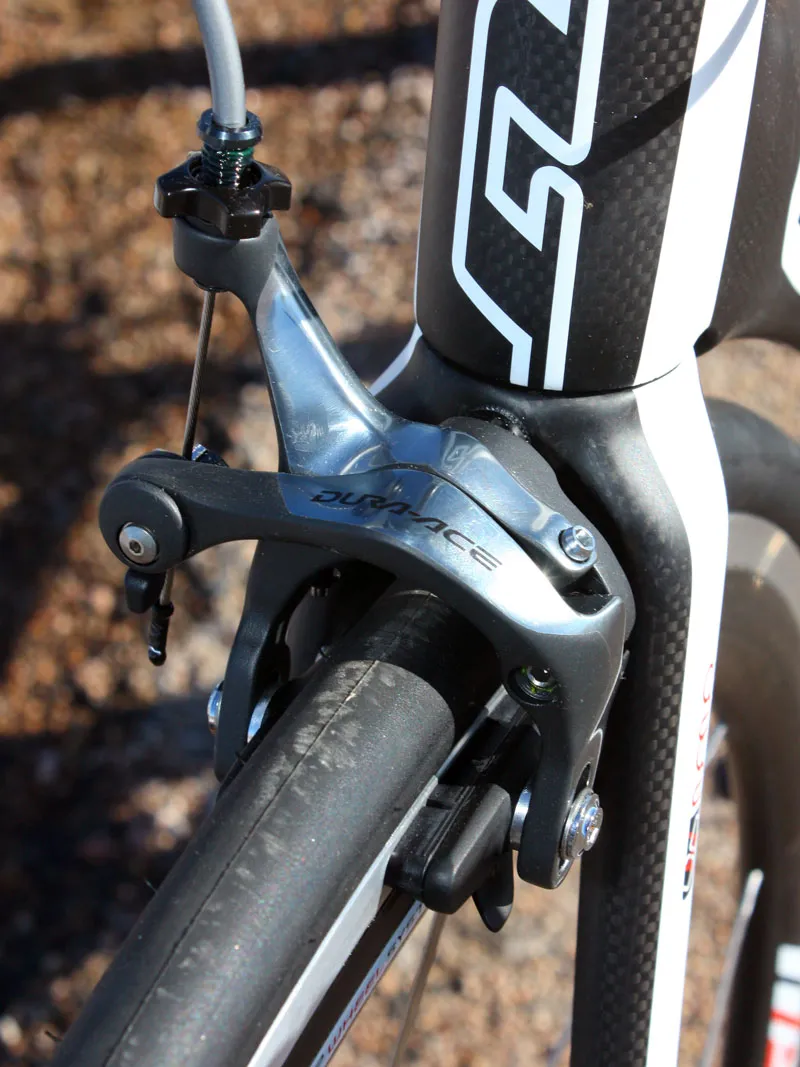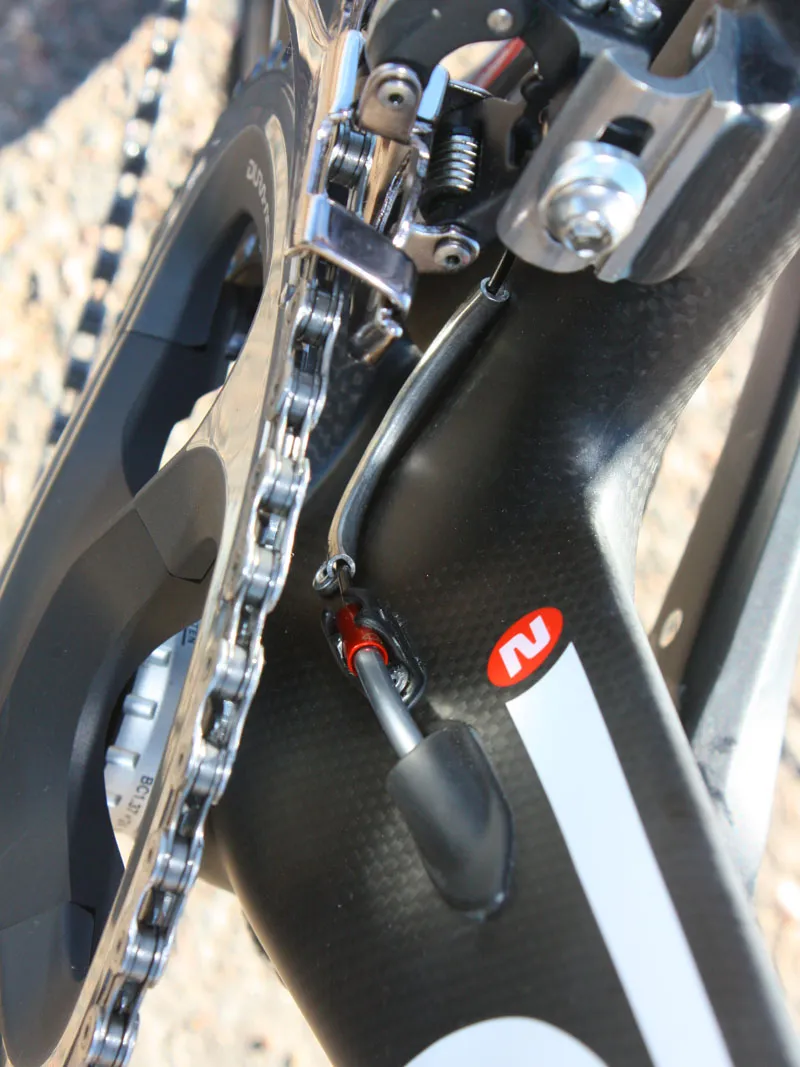Felt's latest AR2 again blends aerodynamic features from their DA line into more versatile F-Series geometry but changes to carbon fibre blends and layups now make it a more legitimate all-around contender than before.
Ride and handling: Stiffer and lighter yet more comfortable too
Last year's AR frames were eye-catchingly aerodynamic and reasonably light but not particularly responsive – put your foot hard into the gas and you could feel the frame flex a bit and the overall sensation just wasn't all that lively or inspiring. But for 2010, engineers brought frame stiffness up to comparable F-Series levels (supposedly within one percent in bench testing) and it's a noticeable – and substantial – improvement.
Gone is the mushiness under power and vague handling, and in its place is a much sharper and eager-feeling machine. Accelerations from a standstill are quicker and more explosive than before and there's a more direct feel through the drivetrain even while just maintaining a steady clip. Sprinters will nevertheless find the AR2 to be not quite as rigid as some ultra-stout superbikes out there but the AR2 is still excellent overall, especially considering the down tube's ultra-narrow profile.
Interestingly, ride quality is also improved with this latest generation. Whereas the old AR was somewhat wooden at times and occasionally harsh, this one offers a smoother ride over broken tarmac and a generally more refined feel. Chainstay and seatstay shapes haven't changed much, if at all, from the previous generation – the former is still big and fat through its length, and the latter is still spindly and gracefully curved – but whatever tuning has been down to the underlying carbon structure has yielded more good flex and less bad flex.
Handling has benefitted from the stiffer chassis as well though, in a subtler manner. With less twist between the head tube and seat tube, turn-in is slightly sharper but generally more confidence inspiring than in the past at high speed, even without the benefit of a tapered front end.
Overall geometry is a touch odd, however, though easily corrected in this case. Felt fit the AR2 with surprisingly short stems across the size range with the one on our 54cm sample measuring a stubby 90mm. Though the overall fit is acceptable enough (we'd guess that many users will need to swap to something longer), the short stem yields twitchy handling in spite of the frame's neutral 73/73.5° head/seat tube angles and decidedly normal 70mm bottom bracket drop. At more moderate speeds it's not much of an issue but we definitely wished for more stability during bare-knuckle descents.
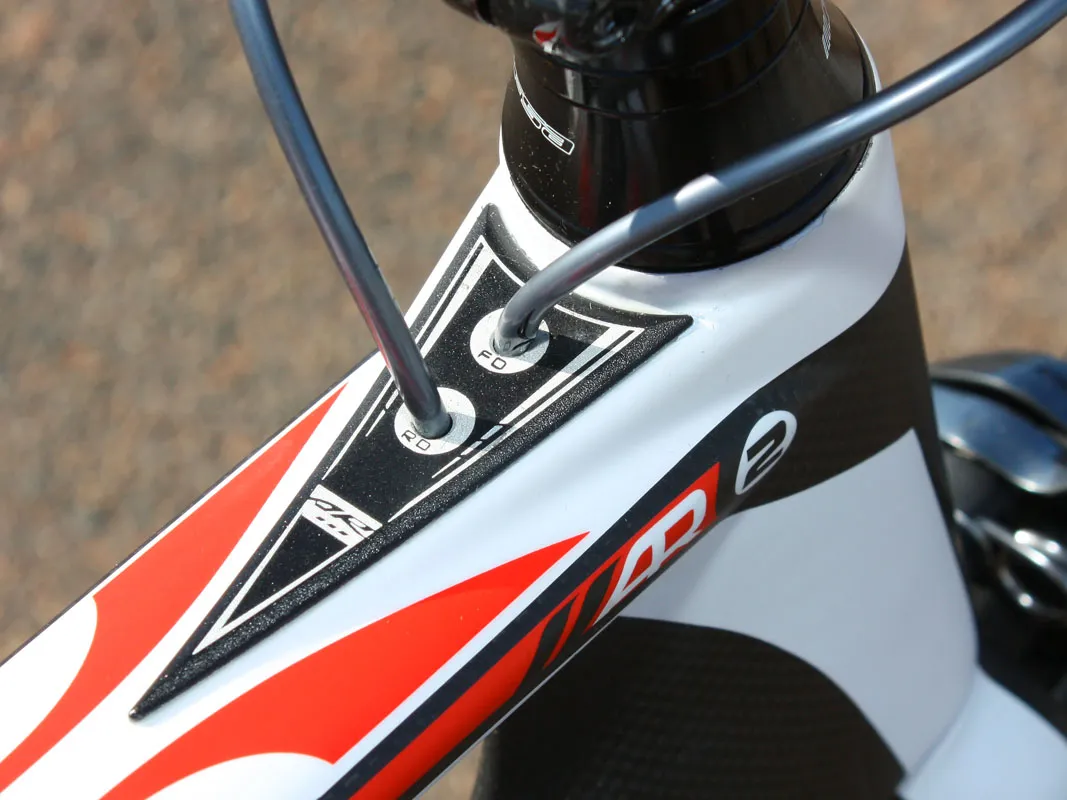
Frame: Weight vs aerodynamics
The AR2's extensive frame surface area naturally brings more mass along with it, with our bare 54cm sample weighing in at 1,190g plus 370g for the accompanying fork – about 250g more than a comparable F-series chassis. DA-inspired frame shaping includes the deep-section down tube and seat tube – both with matching wheel cutouts – aero-profile fork blades, seatstays and matching carbon fibre seatpost, the smoothly transitioned fork crown, and the bulky-looking seat cluster.
Though still pretty light, that 1,190g figure is hardly going to set any pure climber's heart aflutter but Felt contend that the AR's superior aerodynamics will net more significant time savings at the finish line. According to engineer Tim Lane, the AR will save about eight seconds per 10km relative to Felt's own F-series range at 48km/h (30mph) and the aero advantage is actually so substantial that it'd have to pack on over 1.5kg (3.3lb) to even the playing field (each gramme of drag supposedly offsets 21g of mass) – a good thing considering our complete bike weighs a competitive (but far from groundbreaking) 7.34kg (16.18lb) without pedals.
Can you actually feel the AR2's reduced drag? Are you instantly going to start killing it on your local group rides? No, at least not for the vast majority of riders who aren't regularly attuned to their wattage outputs for a given speed. But if you believe Felt's claims, it's free speed nonetheless and now that there's no associated stiffness or ride quality penalty, the argument against the aero option is substantially weakened. On a more subjective note, it's hard to deny the AR's sleek appearance. Look good, feel good, do good… or something like that.
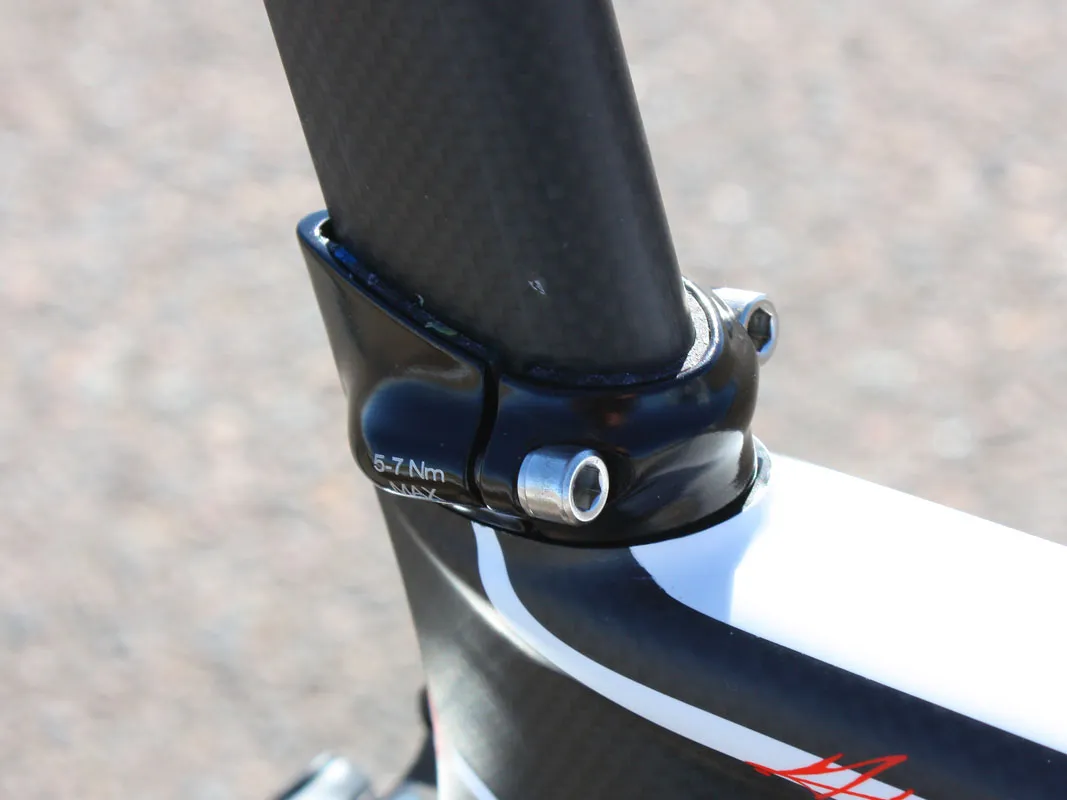
Equipment: High-end parts plus some interesting wheels
The £4,499.99 cost of entry for the AR2 naturally buys you some top-end kit, including Shimano Dura-Ace 7900 levers, derailleurs, cranks and brakes but an Ultegra chain and 105 cassette – not a big deal in terms of overall function but those subs will definitely rub some buyers the wrong way. Nevertheless, it all works seamlessly together.
Braking is superb with heaps of power and fingertip modulation, and shifts are reliably precise – in spite of the internal cable routing that may reduce aerodynamic drag but adds a bit of friction in return on account of the tight bends and long sections of housing. Gearing is notably flatlander-specific, however, with standard-sized chainrings up front and a quad-searing 11-23T cassette.
Cockpit components are similarly straightforward with a Ritchey WCS Carbon Evolution anatomic bar and Felt house-brand saddle, carbon-wrapped stem and aero-profile carbon post – no issues from any of the above, just as it should be.
Wheels are more interesting, essentially comprising previous-generation Zipp Flashpoint hubs and bladed stainless steel spokes matched to newer 40mm-deep Zipp carbon and aluminium clincher rims. They're just a touch on the heavy side but in keeping with the theme, hold their speed very well compared to box-section wheels and are notably solid beneath you. The matching Vittoria Diamante Pro Light tyres help smooth out the ride, but previous experience has shown them to be somewhat prone to cuts.

